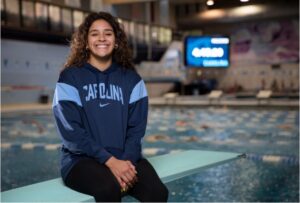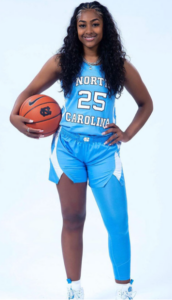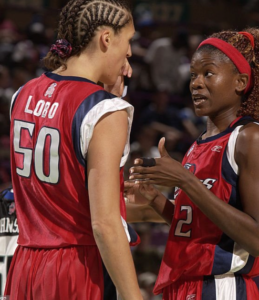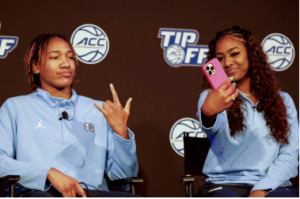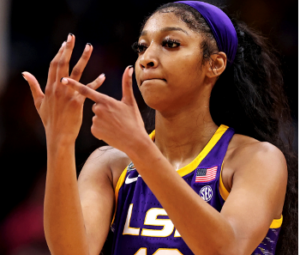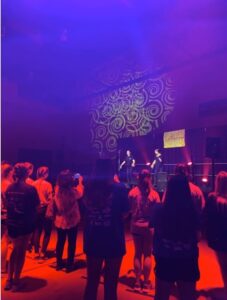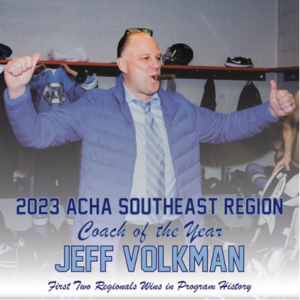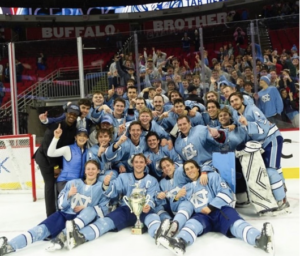By Chantel Gillus
When Tracy Gary, 54, was growing up, her mother faced many hardships. Yet, Gary’s mother made it her mission to build her daughter’s strength, self-esteem and confidence by telling her how smart, pretty and special she was.
She describes her mother as a “battered” woman. As a child, Gary’s mother promised a better life and that it all started with her thought process and work ethic.
“My mother was the strongest woman I knew,” Gary said. “No one could look at her and tell what things were really like. She was so brave. I instill those qualities in my girls and share them with any girl in my presence.”
Through generational feminism, Gary is giving the younger generation the decision to either renew or remake older feminist ideologies. While some women of the older generation commend their successors, others have mixed feelings regarding the remodeling of feminist views.
Millennials and Gen Z are putting their spin on feminism through the use of social media, intersectionality and being unapologetically bold.
Teacher Latonia Vincent, 50, likes to see the new generation of women being empowered and confident in who they are. However, she feels as though everything has boundaries.
“Sometimes I feel that we have stepped too far outside of who we’re supposed to be as far as having respect for our bodies and being so sexually free with our bodies,” Vincent said.
Likewise, Georgia Harrison, 58, mental health specialist, said that she is proud of the new generation and their individuality, but she also feels like they can be vulgar at times.
“I’m OK with their expressions, but not so much their method of delivery. I feel like the new generation is quite capable of expressing themselves in a more sophisticated manner than they use at times,” Harrison said.
Harrison thinks that as life changes, people, things and methods change.
As a member of Gen X, Gary’s form of feminism was establishing a successful career. She became a math teacher at 21 and a principal by age 30, while being a wife and mother to two daughters, aged 25 and 29.
Going to college, establishing a career and being committed to her family was evidence that women don’t have to choose between having a family or a career. Rather, it is possible to have both.
“The best way for me to promote women’s rights was to model the life of a woman who knew her value and place in this world,” Gary said.
As for the women of today, Vincent thinks that it is a good thing that women have stepped into more progressive roles, gaining degrees and employment. She believes everyone should have the option of going out into the workforce or staying at home.
“I feel like many times men are ridiculed when they choose to stay at home with the children because the wife works and makes more money,” Vincent said. “I also feel like today’s women also look down on other women who choose to stay home, like they are not as valuable as those in the workforce.”
She said it’s OK to embrace change, but that people also have to teach old and new ways to children to allow them to choose their own lifestyle.
Harrison said that gender roles are more fluid than they were in the 1960s.
She said the extreme dichotomy between male and female roles is no longer the expected life pattern. Both men and women can pursue careers and choose to dedicate their lives to home life amongst other things.
“I believe a woman should have the same rights as a man in any arena,” Harrison said. “As a single Black woman in the workforce and having to stand on my own and expected to work as hard as the man, I’d say it’s very important for women to have equal rights with men.”
Harrison also mentioned women have come a long way in terms of freedom of speech. According to her, the younger generation is capitalizing on their earned rights and flexibility to openly express themselves.
She thinks it is because parents are more relaxed when it comes to relationships, sexuality, fashion and similar behaviors. People are more accepting of the new generation being who they are than in the past because “it’s simply a new era.”
“Many women today are more focused on corporate America, technology and good times,” Harrison said. “There are times that mothers are left to take care of home alone, some are married, yet unsettled and at times are more concerned about friendship with their daughters and busy being fearful of their sons as opposed to proper parenting.”
Vincent believes that the women of the new era are continuing the fight of women like Shirley Chisholm, who was the first Black woman in Congress in 1968.
“However, I feel that we should not taint their memories by going about it the wrong way. Sometimes in being vocal and demanding respect, we go too far. We begin to be ignored because we are just brash, disrespectful, and harsh in our speaking and actions,” Vincent said.
There are times where Harrison does not feel seen when the younger generation women speak because they speak differently than how she was taught to speak.
She thinks that younger people are more likely to say what they feel without thinking or showing respect for authority.
Gary and Vincent hope to be great role models for their daughters. They hope they continue to take after them through leadership, loving themselves, and being strong women.
Gary said her daughters grew up seeing her work hard in positions typically given to men. They saw how important getting an education was and how it takes an entire family to make the household run effectively.
Gary’s daughters traveled with her as she pursued her graduate degree. Their father cooked and got them ready for school when Gary went to conferences as a teacher, principal, director and superintendent.
“They saw what it was like to be a strong Black woman. They saw my struggles of being tired and frustrated at times. They decided to obtain graduate degrees before having a family. They made a conscious decision to buy a home before getting married,” Gary said. “It is my hope and desire that each generation sets the tone for improvement for the next generation.”
Edited by Courtney Hicks and Halsey Ziglar
